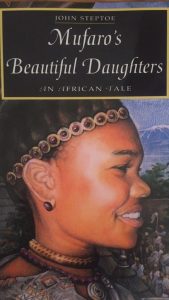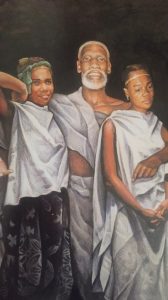
Author: Stephanie Spinner
Illustrator: Meilo So
Publisher and Year: Alfred A. Knopf 2012
Number of pages: 38
Genre: Non-fiction
Analysis
Alex the Parrot is a short chapter book with pictures that describes the life of the African Grey Macaw Alex and his handler Irene Pepperberg. It tells of Irene’s experiments with Alex in order to prove that birds are smart creatures capable of understanding human concepts such as colors, numbers, and shapes.
This book functions as a window or door into the scientific community. The main culture addressed and discussed in the book is that of Irene and her experiences and observations in the scientific field. At many points in the book, it is discussed that Irene has to do certain things in order to ensure that her research will be respected. The book displays scientific culture as something that is easily understandable to children and explains processes Irene follows in a way that is easier for students to understand. The pictures themselves do little to add to the story itself but enhance the overall experience of the book.

The text is broken into smaller three to five sentence paragraphs and each page typically has two to five small paragraphs on it. Having the text broken up in such a way is conducive for a children’s literature book because it allows children to digest the harder information in smaller doses. The pictures are done in a sort of watercolor style and while the humans seem more cartoonish, Alex and any other animals look very realistic. This adds to the readers understanding and visualization that all the events discussed in the books actually occurred. The illustrator uses large pictures and bright colors to capture attention of the reader. The illustrator also uses humor in some instances to break up larger portions of text and keep the reader interested.
The book itself is a truthful retelling of Irene’s experiment and discusses Alex’s death and his death’s impact on the future the experiment. This book is a good tool to use and have in a classroom and is suitable for many ages. This book can function as a stepping stone into discussion of many different aspects of the scientific field. Some examples include experimentation hypothesis process, validity of an experiment, or the general topic of animal brain function. Overall, this book can serve a way to get children interested in scientific topics.

![2016-05-13_14.06.41[1]](https://blogs.iwu.edu/lrbmt2016/files/2016/05/2016-05-13_14.06.411-300x258.jpg)
![2016-05-13_14.05.50[1]](https://blogs.iwu.edu/lrbmt2016/files/2016/05/2016-05-13_14.05.501-300x139.jpg)
![2016-05-10_00.47.03[1]](https://blogs.iwu.edu/lrbmt2016/files/2016/05/2016-05-10_00.47.031-200x300.jpg)
![2016-05-10_00.43.28[1]](https://blogs.iwu.edu/lrbmt2016/files/2016/05/2016-05-10_00.43.281-300x225.jpg)
 New Shoes is about a young African American girl, Ella Mae, who goes to the local shoe shop to get new shoes. But since it was during the time of Jim Crow laws Ella Mae was not allowed to try on any of the shoes because of her skin color. She found out that this was something that happened to every African American person, so Ella Mae and her best friend Charlotte decided to do something about it. They started their own shoe store by colleting old shoes and fixing them up to be as good as new. At their shoe shop everyone was able to try on all the shoes they wanted.
New Shoes is about a young African American girl, Ella Mae, who goes to the local shoe shop to get new shoes. But since it was during the time of Jim Crow laws Ella Mae was not allowed to try on any of the shoes because of her skin color. She found out that this was something that happened to every African American person, so Ella Mae and her best friend Charlotte decided to do something about it. They started their own shoe store by colleting old shoes and fixing them up to be as good as new. At their shoe shop everyone was able to try on all the shoes they wanted.
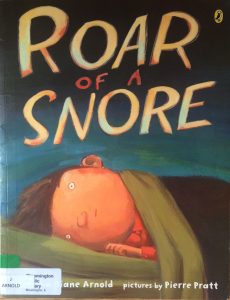
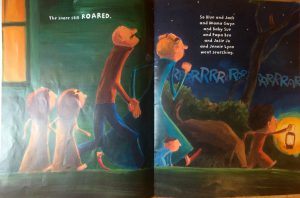
 Tough Guys (Have Feeling Too) is a picture narrative book that talks about how its not always easy being the tough guy and sometimes the guys want people to know that their feelings get hurt too. I believe that this book would be considered a mirror for boys and a window for girls. For boys they see that they aren’t the only ones that get their feelings hurt and that they do not need to be tough all the time. For girls since this book is titled Tough Guys it might be hard for them to connect. Instead they might better relate to a book that talks about how girls are tough too and not always emotional. In the illustrations different races and cultures are represented. Every picture has a male in it and the book does a good job at having them be all different races. There are also different aspects of culture in the illustrations. For example there is a picture of a man in a Lucha Libre uniform which is a type of wrestling that is very popular in Mexican culture. There is also an image of a two men in Tae Kwon Do uniforms, which is a popular and historical Korean activity. Another example is a cowboy and his horseback riding which is a popular American activity. The book shows many different cultures allowing many different people the ability to connect with the text. The images in the text are always going towards the right, which shows that the characters are not as secure, this makes sense that they are all facing the right because all the men feel insecure for having feelings. On the last page there is an image of a father and son and they are facing forward. I took this, as they are content with being able to admit they do have feelings. Since there is minimal text within the book the images make the story interesting and comical but still have a purpose that teaches the lesson that it is okay to show feelings even if you are a tough guy and that you shouldn’t make fun of someone for having feeling. The images are very colorful even when a picture is meant to take place at night, which adds to the lightness of the text. I am unsure if I would use this book in my classroom since only the males in the class would be able to connect due to the lack of females. I wish this text was simply called Everyone Has Feelings and that they showed it is okay for everyone to have feelings to get rid of the negative stereotype that only girls are able to show their emotions.
Tough Guys (Have Feeling Too) is a picture narrative book that talks about how its not always easy being the tough guy and sometimes the guys want people to know that their feelings get hurt too. I believe that this book would be considered a mirror for boys and a window for girls. For boys they see that they aren’t the only ones that get their feelings hurt and that they do not need to be tough all the time. For girls since this book is titled Tough Guys it might be hard for them to connect. Instead they might better relate to a book that talks about how girls are tough too and not always emotional. In the illustrations different races and cultures are represented. Every picture has a male in it and the book does a good job at having them be all different races. There are also different aspects of culture in the illustrations. For example there is a picture of a man in a Lucha Libre uniform which is a type of wrestling that is very popular in Mexican culture. There is also an image of a two men in Tae Kwon Do uniforms, which is a popular and historical Korean activity. Another example is a cowboy and his horseback riding which is a popular American activity. The book shows many different cultures allowing many different people the ability to connect with the text. The images in the text are always going towards the right, which shows that the characters are not as secure, this makes sense that they are all facing the right because all the men feel insecure for having feelings. On the last page there is an image of a father and son and they are facing forward. I took this, as they are content with being able to admit they do have feelings. Since there is minimal text within the book the images make the story interesting and comical but still have a purpose that teaches the lesson that it is okay to show feelings even if you are a tough guy and that you shouldn’t make fun of someone for having feeling. The images are very colorful even when a picture is meant to take place at night, which adds to the lightness of the text. I am unsure if I would use this book in my classroom since only the males in the class would be able to connect due to the lack of females. I wish this text was simply called Everyone Has Feelings and that they showed it is okay for everyone to have feelings to get rid of the negative stereotype that only girls are able to show their emotions.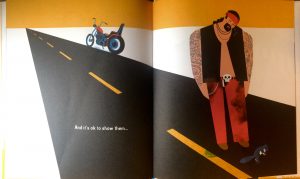
 Take Me Out to The Yakyu is a story about a boy who loves baseball in American and Japan. Through out the story he explains his favorite part about baseball in both countries. I believe that this text would be considered a window because not a lot of people have the opportunity to get the same experiences as the boy in the story so they are unable to connect on a personal level. This text can also be considered a mirror since baseball is a big part of American culture. Although Americans are unable to connect with the Japanese baseball games, they both are the same sport. So if an American or Japanese reader picked up with book they would have the opportunity to connect with it. I really love how this text displays culture. It showed both American and Japanese culture equally and I actually learned some new things about Japanese culture from this book. The images are the main thing that really shows the different culture. On all the left pages there are images of what the boy does at American baseball games and on all the right pages it is an image of what the boy does at Japanese baseball games. So for example on page 10 he is talking about the food he gets at the games. On the left side there is a picture of a hot dog and peanuts, on the right side there is a picture of soba noodles and edamame. The images are full of color and have a lot of detail, and the text mirrors the pictures perfectly which helps describe what is going on in the culture one might not know well. One of my favorite things about the text is that on each page they have American sayings like fastball then on the opposite page they have the Japanese version of that saying. I never expected to learn a couple words in a different language from a children’s book. The text really shows two different cultures and that it is okay to have two different things part of your life. I also think that this text does a good job at showing that activities may not be as different as we think in other cultures. In both countries they are playing the same sport with the same rules. The only difference is the culture that is surrounding the game. I really enjoyed this text and I think it would be a great book to use in the classroom to show that culture can make people different and that it is important to have a good understanding of culture and that its okay to be different.
Take Me Out to The Yakyu is a story about a boy who loves baseball in American and Japan. Through out the story he explains his favorite part about baseball in both countries. I believe that this text would be considered a window because not a lot of people have the opportunity to get the same experiences as the boy in the story so they are unable to connect on a personal level. This text can also be considered a mirror since baseball is a big part of American culture. Although Americans are unable to connect with the Japanese baseball games, they both are the same sport. So if an American or Japanese reader picked up with book they would have the opportunity to connect with it. I really love how this text displays culture. It showed both American and Japanese culture equally and I actually learned some new things about Japanese culture from this book. The images are the main thing that really shows the different culture. On all the left pages there are images of what the boy does at American baseball games and on all the right pages it is an image of what the boy does at Japanese baseball games. So for example on page 10 he is talking about the food he gets at the games. On the left side there is a picture of a hot dog and peanuts, on the right side there is a picture of soba noodles and edamame. The images are full of color and have a lot of detail, and the text mirrors the pictures perfectly which helps describe what is going on in the culture one might not know well. One of my favorite things about the text is that on each page they have American sayings like fastball then on the opposite page they have the Japanese version of that saying. I never expected to learn a couple words in a different language from a children’s book. The text really shows two different cultures and that it is okay to have two different things part of your life. I also think that this text does a good job at showing that activities may not be as different as we think in other cultures. In both countries they are playing the same sport with the same rules. The only difference is the culture that is surrounding the game. I really enjoyed this text and I think it would be a great book to use in the classroom to show that culture can make people different and that it is important to have a good understanding of culture and that its okay to be different.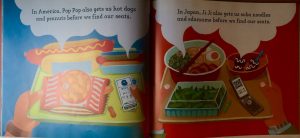
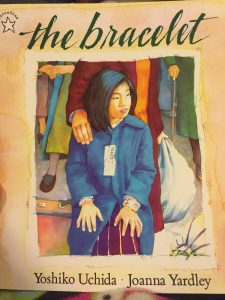
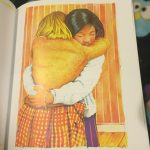
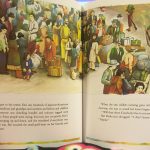
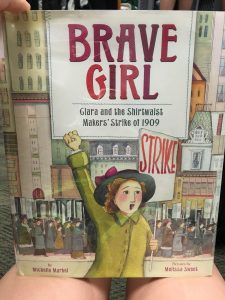 Author: Michelle Markel
Author: Michelle Markel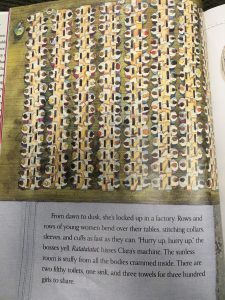 r example, when Clara arrives in America on the boat, the illustrator included an image of the long line of people waiting on the boat for their new life in America. The text is displayed on a stitched piece of fabric that connects to the main theme of the story very well. The pictures are often sewn into the text, making them resemble a quilt. Clara is often found looking or moving to the right of the page, signifying the change that is going to happen. The author uses many adjectives that emphasize the struggles Clara and her colleagues faced. For example, when Clara first arrives, the author introduces her as dirt poor and five feet tall. Ideologically, this story has many things that children can take away after reading. First and foremost, this book gives the students a historical look into the life of immigrants, especially those of women. This book focuses on the hardships and challenges that Clara faced with work and learning to speak English. Secondly, it shows students how important it is to stand up for what they know is right. If Clara were not to stand up for what she believed was right, many workers would have suffered for a longer period of time. Even after Clara faced many arrests, beatings, and threats to be fired, she kept the fight for her rights alive. It proves that determination and perseverance can lead to change for what is right. At the end of the book, readers are introduced to more information about the garment industry that can further their understanding on the topic.
r example, when Clara arrives in America on the boat, the illustrator included an image of the long line of people waiting on the boat for their new life in America. The text is displayed on a stitched piece of fabric that connects to the main theme of the story very well. The pictures are often sewn into the text, making them resemble a quilt. Clara is often found looking or moving to the right of the page, signifying the change that is going to happen. The author uses many adjectives that emphasize the struggles Clara and her colleagues faced. For example, when Clara first arrives, the author introduces her as dirt poor and five feet tall. Ideologically, this story has many things that children can take away after reading. First and foremost, this book gives the students a historical look into the life of immigrants, especially those of women. This book focuses on the hardships and challenges that Clara faced with work and learning to speak English. Secondly, it shows students how important it is to stand up for what they know is right. If Clara were not to stand up for what she believed was right, many workers would have suffered for a longer period of time. Even after Clara faced many arrests, beatings, and threats to be fired, she kept the fight for her rights alive. It proves that determination and perseverance can lead to change for what is right. At the end of the book, readers are introduced to more information about the garment industry that can further their understanding on the topic.